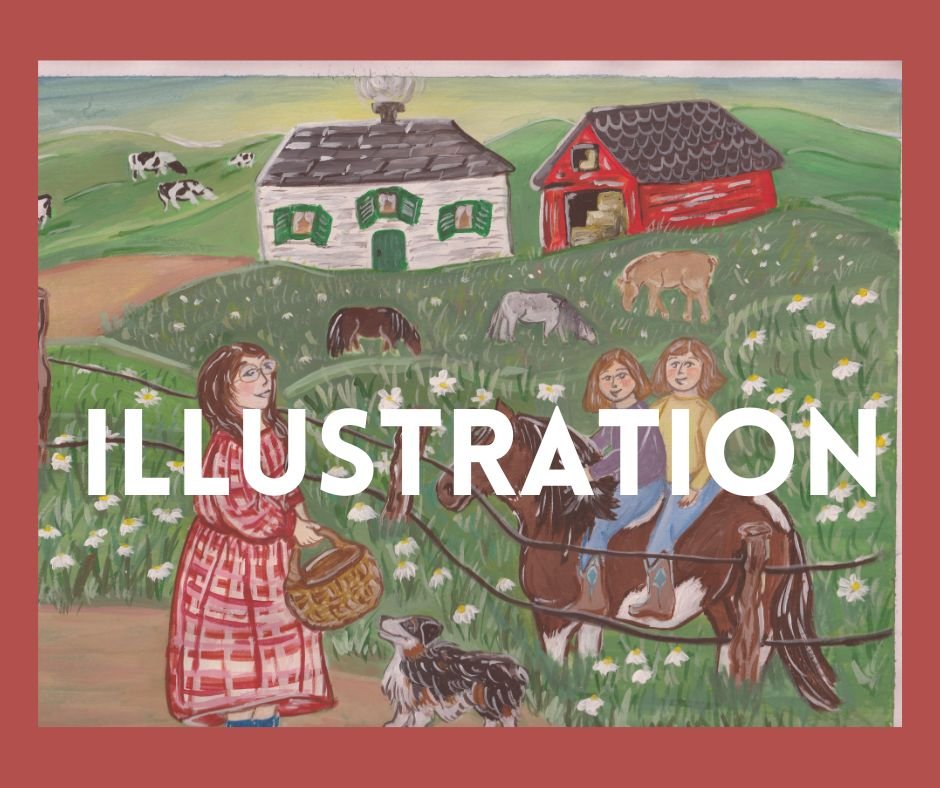Inside Out: Stories of textile, labor and stitches
This project, funded in part by the Berkshire Taconic Foundation Artist Resource Trust Fund, is a visual exploration of some historic garments in museum collections throughout western massachusetts and Textile labor history in an attempt to understand the embedded narratives and portraits woven into the fabric of our clothing.
Looking at garments between 1790-1900 at local historical societies within the 4 counties of western massachusetts, this series of work combines a multimedia approach to exploring archival and material cultural collections, spanning painting, block-printing, and sewing as a way of constructing narrative. studies, portraiture, and the creation of garments in response to the items explored reveal minimally explored concepts and people connected to the garment industry’s history and the artisanal and agricultural hands that have historically made our clothes. This project started in april 2024 with a completion date for april 2025. I will share my work on the project in the form of images and some writing at my blog here.
“singer auto-ritratto” - acrylic gouache on paper. self-portrait Inspired by singer sewing machine trade cards from 1892 depicting women from Italy sewing on their singer treadle machine and a nod to my ancestral lineage as an Italian American woman.
Portrait of Laura baldt. Acrylic gouache on paper. Prof. baldt wrote two books about the clothing making industry and encouraged women to push for legislation ensuring healthy working conditions in factories even before women won the right to vote.
portrait of cotton plant. we often are disconnected from the plants and animals that provide the fiber for our fabrics and clothing. What do the plants and animals look like that make up our clothing? How are they cultivated? what are the labor conditions and the exploitations of labor that have historically been enacted in order to provide textiles to others?
“Imagined portrait of Catherine phelps parsons” acrylic gouache on paper. Work in progress. this is a portrait of 18th century tailor Catherine phelps parsons (1731-1798) of Northampton, MA. Parsons was an artisan-trained and skilled tailor and gown maker who worked professionally in Northampton, MA. Similar to how Copley painted Paul revere as a respected silversmith and craftsperson of his trade, I have chosen to depict parsons in a similar fashion: as someone with educated skill, accomplishment, and a significant financial contributor to her household through needlework skill and garment making. This goes against our typical notions of women in the 18th century as not having professional skills or not contributing to a professional artisan economy. Parsons, and other women tailors of the 18th century, remind us that in the already globalized economy of 18th century colonial New England, there were enterprising and professionally skilled women participating in commerce, both as buyers and entrepreneurs.
“Nuovo mondo/vecchio sogno” acrylic gouache on paper. inspired by an extant garment in the Berkshire historical society’s collection from the 1890’s made in a department store’s custom clothing department in Pittsfield, MA. how many Immigrant women in the late 19th-early 20th century were employed as dressmakers or factory sewing machine operators providing clothing to the middle class and wealthy clientele? Who are the hands, people, and voices that made the clothing during an exploding rate of garment fabrication in factory settings?
acrylic gouache on paper. close-up of my 1911 singer sphinx 27 treadle sewing machine sewing through fabric.
flour sack patter. acrylic gouache on paper. decorative study of the types of patterns printed on feedbacks during the Great Depression that were used in the household to make simple cotton dresses as a form of thrift and economy.
Portrait of a silk moth. Silk is an agricultural product. the silk moth is really a form of livestock, raised for their cocoons to be harvested, cleaned and spun into silk.
“Woven” acrylic gouache on paper. a closer look at the geometric structure and weave of fabric and woven linen - a cloth utilized significantly for fabric pre-19th century.
“gussets” in the 18th century, clothing was constructed using a low-waste approach and garments were constructed geometrically from rectangles, squares, and gussets (squares utilized as diamond shapes to allow for mobility at places such as underarms and at the hip following the length of a skirt or tunic/shirt).
a close up of a study for one of my ‘art garments’ - this is a top, constructed utilizing an 18th century approach of two rectangles. Hand-painted with drawings of thread, needle and geometric lines inspired by hand-sewn details such as pleating, seams, and lace. Inspired by extant garments in the collection at historic northampton.
Cover for my zine “getting into treadle” - the first art piece exploring this project’s concepts and the history of the sewing machine as well as how to sew with an antique sewing machine.
a playful image - and also strangely a contrast to how fabric was once an extremely expensive commodity and now we have an abundance of it - so much that we can host free fabric swaps where people bring unused fabric for others to make with.























